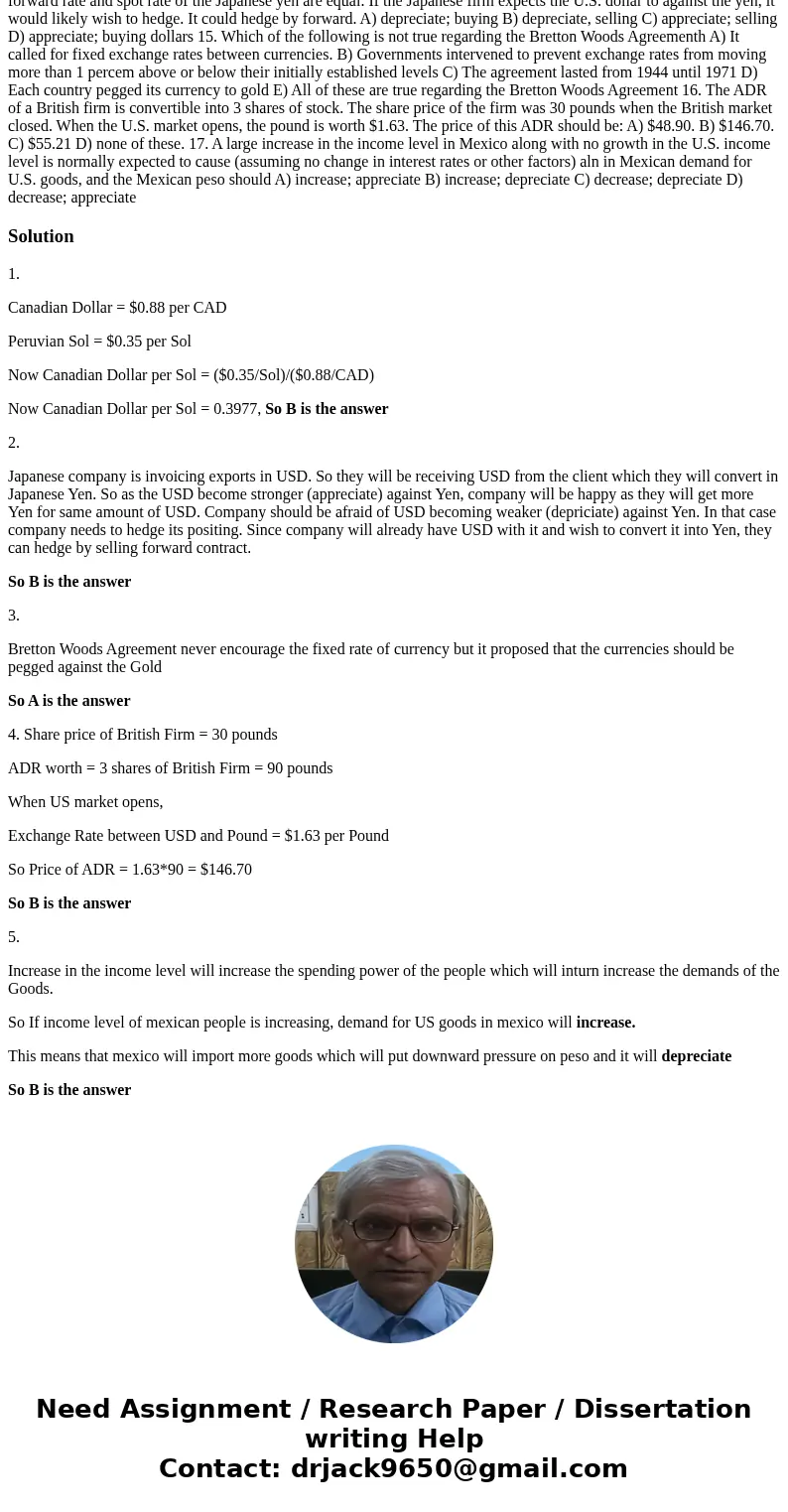13. Assume the Canadian dollar is equal to $.88 and the Peruvian Sol is equal to $,35. The value of the Peruvian Sol in Canadian dollars is: A) about 3621 Canadian dollars B) about 3977 Canadian dollars C) about 2.36 Canadian dollars. D) about 2.51 Canadian dollars. 14. Assume a Japanese firm invoices exports to the U.S. in U.S. dollars. Assume that the forward rate and spot rate of the Japanese yen are equal. If the Japanese firm expects the U.S. dollar to against the yen, it would likely wish to hedge. It could hedge by forward. A) depreciate; buying B) depreciate, selling C) appreciate; selling D) appreciate; buying dollars 15. Which of the following is not true regarding the Bretton Woods Agreementh A) It called for fixed exchange rates between currencies. B) Governments intervened to prevent exchange rates from moving more than 1 percem above or below their initially established levels C) The agreement lasted from 1944 until 1971 D) Each country pegged its currency to gold E) All of these are true regarding the Bretton Woods Agreement 16. The ADR of a British firm is convertible into 3 shares of stock. The share price of the firm was 30 pounds when the British market closed. When the U.S. market opens, the pound is worth $1.63. The price of this ADR should be: A) $48.90. B) $146.70. C) $55.21 D) none of these. 17. A large increase in the income level in Mexico along with no growth in the U.S. income level is normally expected to cause (assuming no change in interest rates or other factors) aln in Mexican demand for U.S. goods, and the Mexican peso should A) increase; appreciate B) increase; depreciate C) decrease; depreciate D) decrease; appreciate
1.
Canadian Dollar = $0.88 per CAD
Peruvian Sol = $0.35 per Sol
Now Canadian Dollar per Sol = ($0.35/Sol)/($0.88/CAD)
Now Canadian Dollar per Sol = 0.3977, So B is the answer
2.
Japanese company is invoicing exports in USD. So they will be receiving USD from the client which they will convert in Japanese Yen. So as the USD become stronger (appreciate) against Yen, company will be happy as they will get more Yen for same amount of USD. Company should be afraid of USD becoming weaker (depriciate) against Yen. In that case company needs to hedge its positing. Since company will already have USD with it and wish to convert it into Yen, they can hedge by selling forward contract.
So B is the answer
3.
Bretton Woods Agreement never encourage the fixed rate of currency but it proposed that the currencies should be pegged against the Gold
So A is the answer
4. Share price of British Firm = 30 pounds
ADR worth = 3 shares of British Firm = 90 pounds
When US market opens,
Exchange Rate between USD and Pound = $1.63 per Pound
So Price of ADR = 1.63*90 = $146.70
So B is the answer
5.
Increase in the income level will increase the spending power of the people which will inturn increase the demands of the Goods.
So If income level of mexican people is increasing, demand for US goods in mexico will increase.
This means that mexico will import more goods which will put downward pressure on peso and it will depreciate
So B is the answer


 Homework Sourse
Homework Sourse